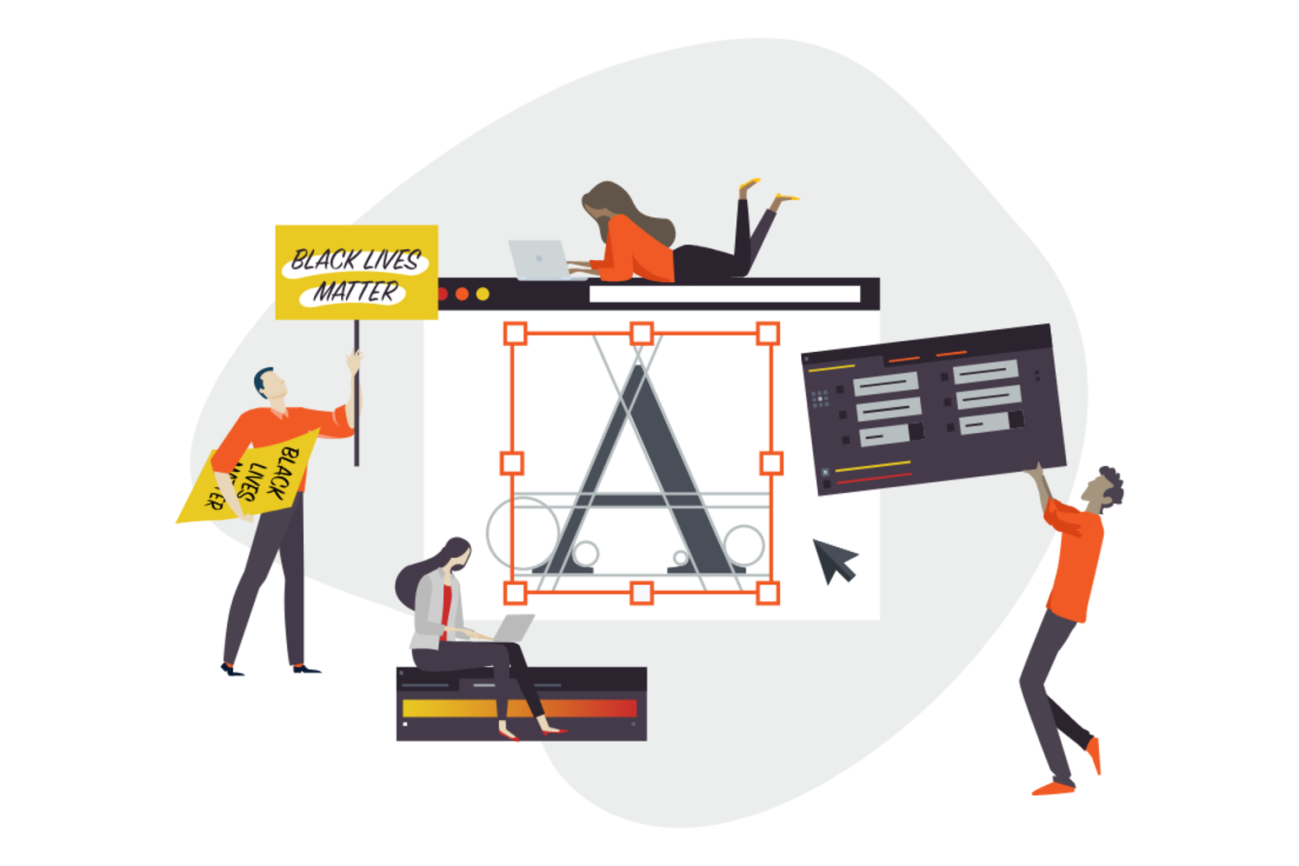//
Feb 17, 2021
Designing with Intention: Human-Centered Design in the Age of Racial Reckoning
Suffice it to say, 2020 was a year of both radical change and serious reflection.
For 8 minutes and 46 seconds the world watched as Minneapolis police officer Derek Chauvin knelt on the neck of George Floyd, killing him over suspicion of possessing a counterfeit $20 bill. In those minutes we were unable to look away, unable to deny the reality of rampant racism embedded in the very framework of our nation. And in the face of a national reckoning with systemic racism, many of us felt called to action. But George Floyd is no longer trending. Breonna Taylor is no longer trending. Ahmaud Arbery is no longer trending.
So we must ask ourselves; how are we responding now in the moments when racial justice isn’t a trend on social media? And what role do designers and creatives play in building a more equitable society? It starts with human-centered design.
Human-Centered Design, For All Humans
It’s no secret the design field has historically been dominated by white folks - 73% as it stands today, according to a recent survey of design industry demographics conducted by AIGA and Google*. Since designers are tasked with putting themselves in the shoes of their clients, that often involves designing for those who are different from the designer—whether that’s through gender identity, socio-economic background, race, or religion. All of these facets of our identities play a role in how we view the world and, in turn, interact with design. So our challenge becomes asking ourselves how the predominantly white community of designers is responding.
Stepping into someone else’s shoes isn’t a natural process. After all, implicit biases live primarily in the subconscious part of the brain, and it takes conscious effort to undo those learned constructs and behaviors. Because of this, intentionality needs to be at the forefront of our workflow. This will take us from “human-centered” becoming more than just a buzzword, shifting to actual application.
Exercising Intention
One example of shifting from trendy towards intention is AirBNB’s evolution of their people-based illustrations**. Their team came to the realization that by using an outline instead of a fill, all of their depictions of people were perceived as Caucasian. Needless to say, this did not represent their full demographic of users. Further iterations included using unnatural colors such as green, orange, and purple to depict skin. While the reasoning behind that choice was most likely aimed at conveying neutrality, we shouldn’t attempt to streamline racial depictions, even though choosing to be “colorblind” can feel like a safe option.
After many character studies from their real-life users from around the world, AirBNB now has a refreshing visual language that celebrates the diversity of their users.
Taking a tip from AirBNB, we can start by asking ourselves how we primarily depict human forms in our designs. And though, while this is a good starting point, visual representation in digital and print design isn’t how we achieve complete racial equity.
Another way to exercise intention is to sway from showcasing just a single story. Storytelling is the heart of the human experience; it’s how we learn about ourselves and the world around us. As designers, we build platforms that curate stories, promote interactions, and construct user output. But telling a story through just a single perspective can be dangerous and exclusionary.
Perhaps in its application this means building multiple personas with a thoughtfulness and intention that wasn’t part of the process before. Maybe it means considering a user flow that integrates multiple stories and pathways. However the method, intention must be present.
Final Thoughts
Starting the work to become anti-racist through design can be daunting. It will be clumsy, and at times challenging. But it is imperative. Some ways to incorporate anti-racist work into your design process could include:
- Diversifying your visual depictions of humans
- Ensuring design work is accessible and ADA compliant
- Avoiding single-story narratives or personas
- Amplifying Black voices
- Offering more seats at decision making tables
- Educating yourself on the history of systemic racism
For today, stepping towards human-centered design could start with adding more Black voices to your feed. Here are a few creatives worth exploring:
- Black Artists + Designers Guild
- Blacks Who Design
- Gail Anderson
- Maurice Cherry






